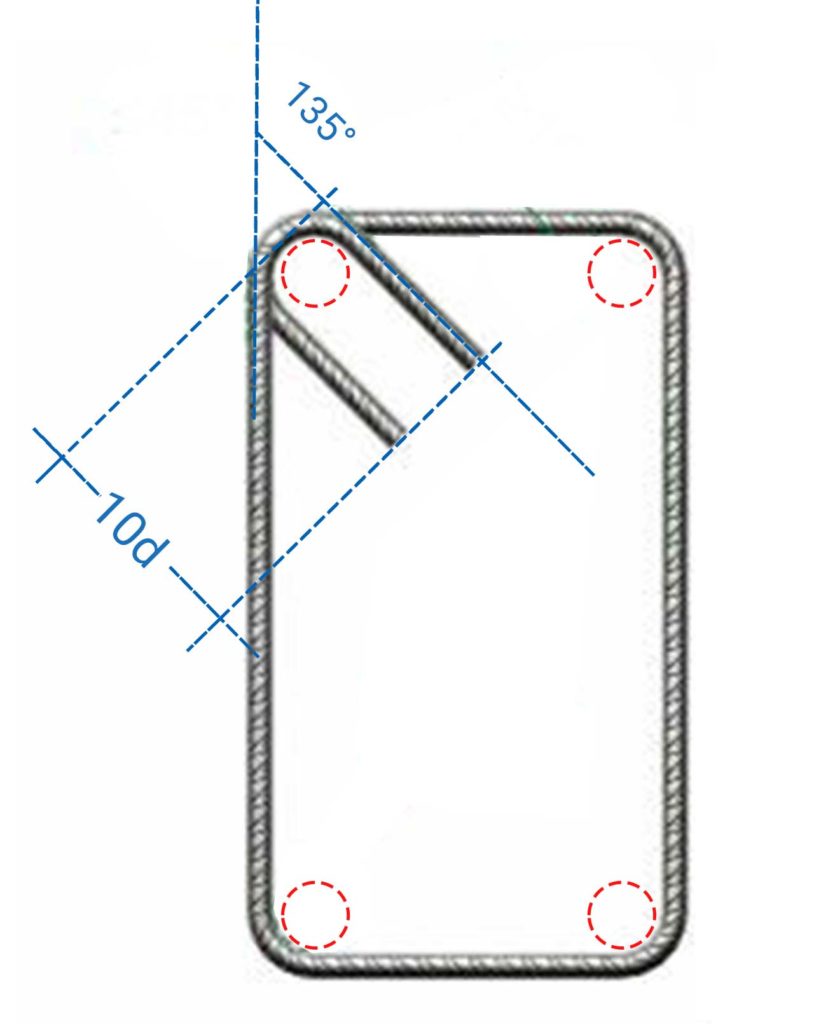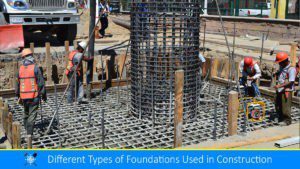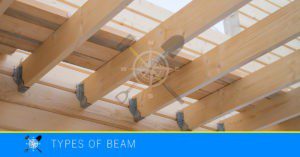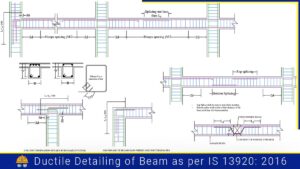What are Stirrups?
Stirrups are a type of reinforcing bar that is arranged vertically along a beam in order to counteract the development of shear in the beam. These bars may be arranged singly or in pairs, and their secondary function is to keep the top and bottom main reinforcement bars in place above and below the neutral axis of the beam. Stirrups are also referred to as secondary reinforcement bars, with transverse ties being the other type of such bars. The density of stirrups used in a structure is primarily determined by the amount of shear generated by the beam or other structural members.

The main purpose of stirrups is to provide lateral support and prevent the longitudinal reinforcement from buckling or collapsing under the weight of the structure or external loads. They also help to confine the concrete and prevent it from spalling or cracking under compression.
Stirrups are often spaced at regular intervals along the length of the beam or column, and their size and spacing are determined by the structural engineer based on the design requirements of the specific structure. The diameter and spacing of stirrups are important factors in determining the strength and durability of the concrete structure.
Importance of Shear stirrups
Shear resistance: Stirrups provide shear resistance to the reinforced concrete structures by preventing diagonal cracking and enhancing the shear strength of the beam. They act as a support system for the longitudinal reinforcement, preventing the concrete from breaking apart due to shear stresses.

Ductility: Stirrups enhance the ductility of reinforced concrete structures by enabling them to undergo significant deformations before collapsing. This improves the structures’ resilience to sudden loads like earthquakes, thereby guaranteeing the occupants’ safety.
Prevent Buckling: Stirrups prevent the buckling of longitudinal bars in compression zones, especially in columns and beams, thus enhancing their axial and flexural strength.
Durability: Stirrups play a crucial role in enhancing the durability of reinforced concrete structures by protecting them against environmental factors such as moisture, chemical attacks, and temperature changes. They help to ensure the long-term performance of the structure.
Size of Stirrups
The size of stirrups is based on the size of the longitudinal bars and the amount of shear force the beam is subjected to. The minimum diameter of stirrups should not be less than 6mm, or the diameter of the longitudinal reinforcement, whichever is greater.
Spacing of Stirrups
The spacing of vertical stirrups is found by the formula
\( S_v=\frac{0.87f_y.d.A_{sv}}{V_{us}} \)
where:
Asv = spacing of stirrups
Sv = total area of longitudinal reinforcement
fy = characteristic strength of stirrup reinforcement bars in N/mm2.
d = effective depth of the beam or column
Vus = shear force resisted by the shear reinforcement
Maximum Spacing
According to cl.26.5.1.5 of IS 456: 2000, the maximum distance between shear reinforcement bars, when measured along the member’s axis, should not exceed 0.75 times the effective depth of the section for vertical stirrups, and for inclined stirrups at 45 degrees, it should not exceed the effective depth of the section. The effective depth of the section is represented by ‘d’. In any case, the spacing between the shear reinforcement bars should not be greater than 300mm.
Minimum Spacing
The minimum spacing of stirrups in a reinforced concrete beam or column is determined by the following formula:
\( \frac{A_{sv(min)}}{b.S_v}\geq\frac{0.04}{f_y} \)
\( A_{sv(min)}\;\geq\;\frac{0.04b.S_v}{f_y} \)
where:
Asv(min) = minimum spacing of stirrups
Sv = total area of longitudinal reinforcement
fy = characteristic strength of stirrup reinforcement bars in N/mm2.
b = width of the beam or column
Also, read: Clear Cover in Concrete: Its Importance and Type
Important of Spacing for Stirrups
- Shear strength: Stirrups are used to provide shear resistance to the beam by preventing diagonal cracking and enhancing the shear strength of the structure. The spacing of stirrups influences the amount of shear reinforcement in the beam, which ultimately affects the shear strength of the structure.
- Durability: Proper spacing of stirrups ensures that the concrete is adequately protected against environmental factors such as moisture, chemical attack, and temperature changes. This helps to ensure the durability of the structure and its resistance to long-term deterioration.
- Structural Integrity: Incorrect spacing of stirrups can lead to the failure of the structure, which can compromise its structural integrity. By maintaining the correct spacing of stirrups, the structure can safely resist external loads and maintain its stability and integrity.
- Construction efficiency: The spacing of stirrups has a direct impact on the construction efficiency of the structure. Proper spacing can minimize the amount of reinforcement required and simplify the construction process. This can result in cost savings and reduced construction time.
Also, read: How to Calculate Chair Bars Requirements?
FAQs
Q: What are stirrups in reinforced concrete structures?
A: Stirrups are secondary reinforcement bars that are provided vertically to the beam to counteract shear development by the beam. They may be arranged singly or in pairs and are used to hold the top and bottom main reinforcement bars in position above and below the neutral axis of the beam.
Q: What is the purpose of stirrups in reinforced concrete structures?
A: The primary purpose of stirrups is to provide shear resistance to the beam and prevent diagonal cracking. They also enhance the ductility, durability, and stability of the reinforced concrete structure.
Q: What should be the minimum spacing of stirrups as per ACI?
A: The American Concrete Institute (ACI) specifies the minimum size of stirrups based on the size of the longitudinal bars and the amount of shear force to which the beam is subjected. The diameter of stirrups should not be less than 1/8 of the diameter of the longitudinal bars or 6mm, whichever is greater. Additionally, the ACI code recommends that the spacing of stirrups should not exceed the least 3 times the effective depth of the beam, 18 inches, or the least dimension of the compression face of the beam. However, the size and spacing of stirrups can be increased to achieve the desired level of ductility or to meet specific design requirements.
Q: What is the minimum diameter of stirrups in reinforced concrete structures?
A: The minimum diameter of stirrups should not be less than 6mm or the diameter of the longitudinal reinforcement, whichever is greater. This ensures that the stirrups provide adequate shear resistance and enhance the ductility of the structure.
Q: How do stirrups enhance the ductility of reinforced concrete structures?
A: Stirrups prevent diagonal cracking in the beam and enhance its shear strength, allowing the beam to undergo large deformations before collapsing. This improves the ductility of the structure, making it more resilient to sudden loads and ensuring the safety of the occupants.
Q: Can you use fewer stirrups than what is recommended in the design codes?
A: No, it is not recommended to use fewer stirrups than what is recommended in the design codes. The spacing and size of stirrups are determined based on the shear force in the beam and the effective depth of the beam. Reducing the number of stirrups can compromise the shear resistance of the beam and compromise the safety of the structure.
![]()







